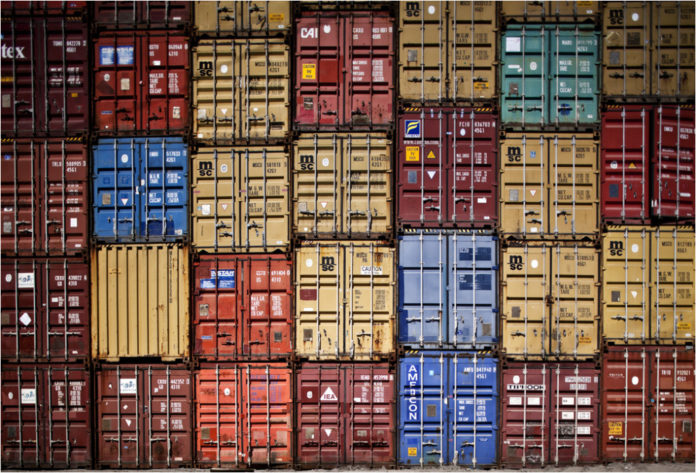Port participates in demonstration project to smooth cargo flow
The Port of Long Beach takes pride in providing peerless customer service, and part of that is paving the way for more efficient flow of cargo.
A major impediment is limits in the sharing of information needed to easily pick up a cargo container. The San Pedro Bay, the busiest port complex in the nation, is home to 12 container terminals, 12 shipping lines, three shipping alliances, two Class I railroads, a short-line railroad, a legion of trucking companies and thousands of cargo owners.
The information ecosystem serving this enormous supply chain is disparate, with cargo data traditionally exchanged using phone calls and relationships rather than the 21st-century information-sharing technology consumers take for granted when ordering from companies like Amazon.
This summer, the Port’s participated in a two-month demonstration of GE Transportation’s Port Optimizer port information portal aimed at changing that. Instead of relying on separate websites for each supply-chain segment that handles a container, the cloud-based Port Optimizer draws all of the data together in a single access point, enabling users to get detailed information on cargo flow.
Dr. Noel Hacegaba, the Port’s Deputy Executive Director of Administration and Operations, compared the process to searching for flights on a website like Expedia.
“Think about how much time you save in booking flights, hotels and car rentals,” Hacegaba said. “This is similar. With the Port Optimizer, we can facilitate the seamless flow of data among ocean carriers, terminals, chassis providers, truckers, the railroads and cargo owners. By facilitating the seamless flow of data, we can also enable the seamless transfer of containers.”
What does that look like in practice? Historically, the information accompanying a ship call includes an estimated time of arrival and destinations for on-dock rail services, but not data on individual containers. Instead, Port Optimizer shows detailed, real-time information on containers up to two weeks earlier than is possible now — beginning with the loading of a container aboard a ship in Asia.
Having that information empowers terminals to pre-plan the deployment of the right equipment and labor to work the vessels, truckers to schedule their fleet operations and railroads to move locomotives to where they’re most needed. In short, containers move more quickly through terminals, truckers can pick up those boxes more easily and faster, and the railroads can transport loads to destinations more efficiently.
Said Hacegaba: “Beneficial cargo owners recognize the value of this type of software. Terminals view it as an added value. Shipping lines like it because their customers are happy. We’re excited about the potential here.”
This summer’s demonstration tested the GE software with the Port’s stakeholders. Participants in the Port Optimizer pilot included Long Beach Container Terminal, Total Terminals International, International Transportation Service, Maersk, Ocean Network Express (ONE), Orient Overseas Container Line, cargo owners such as Office Depot and SharkNinja, and the Harbor Trucking Association.
Port officials and GE Transportation are now analyzing the data gained through the pilot program, which ended in mid-October. The Port of Los Angeles previously conducted its own demonstration of the software.
In the near future, the Board of Harbor Commissioners is expected to determine the Port’s role in the future use and development of the Port Optimizer software.







